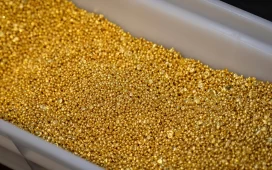Weaker-than-expected data could signal weakened demand, impacting Aussie trade terms as China accounts for one-third of Australian exports. Given that Australia has a trade-to-GDP ratio above 50%, deteriorating trade terms could fuel bets on multiple RBA rate cuts, pressuring AUD/USD. Conversely, upbeat data may signal a less dovish RBA stance, boosting Aussie dollar demand.
Beyond the data, US-China trade headlines also require consideration. An escalation in the US-China trade war may weigh on AUD/USD, while progress toward a trade deal could drive the pair higher.
AUD/USD: Key Scenarios to Watch
- Bearish Aussie dollar Scenario: Escalating US-China tensions, weak China data, or dovish RBA rhetoric may send AUD/USD toward the $0.63623 support level and the 50-day EMA.
- Bullish Aussie dollar Scenario: Easing US-China trade tensions, upbeat China data, Beijing stimulus, or hawkish RBA signals could drive the pair above the 200-day EMA toward the May 14 high of $0.65008.
Following last week’s labor market data, markets are pricing in three RBA rate cuts. Shane Oliver, AMP’s Head of Investment Strategy and Chief Economist, reacted to the jobs report, stating:
“The Australian money market post the jobs data has priced in a 96% probability of a 0.25% RBA rate cut on Tuesday with three 0.25% rate cuts priced in by year end.”
Click here for a more comprehensive analysis of AUD/USD trends and trade data insights.
Aussie Dollar Daily Outlook: Fed Signals and Rate Differentials
Later today, hawkish Fed signals could widen the US-Aussie interest rate differential in favor of the US dollar.A less dovish Fed stance may send AUD/USD toward the $0.63623 support level and the 50-day EMA.
On the other hand, support for a Q3 2025 Fed rate cut may narrow the rate differential. A more dovish Fed could drive AUD/USD above the 200-day EMA toward $0.65144.





